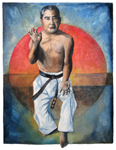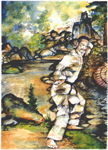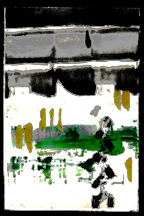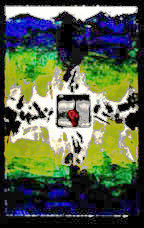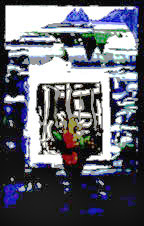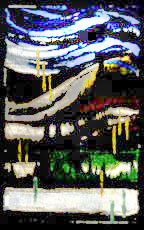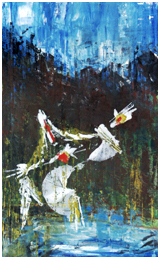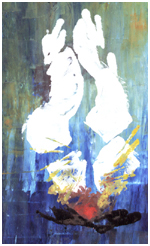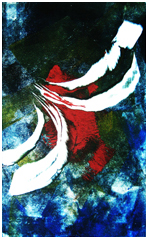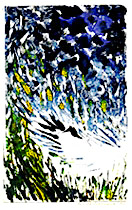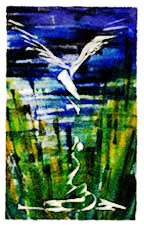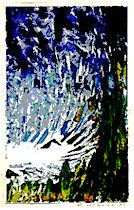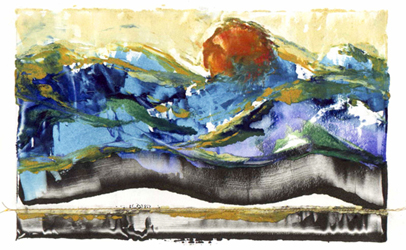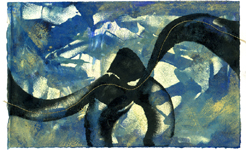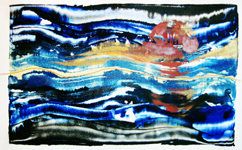![]()
karate
click on any image to open a larger file
My Okinawan go-ju (hard-soft) karate studies began in January, 1995, graduating to 3rd-degree black belt in June, 2002. That September, I started the Salt Spring Shorei-Kan dojo, continuing since then as chief instructor.
Master Tomoaki Koyabu helped me write a book, Dancing in the Kara of Te, which covers some key basics I've learned through him about the art.I've learned about other self-defence and martial arts as well, especially from organizing and running a five-week community participation program in Vancouver called "The Art of Martial Arts" in 1998. Thirty different martial arts schools representing 24 different forms from seven countries taught classes, gave performances, and contributed visual, musical, dramatic, and other arts to the events. More than 1,200 people attended, and many continued taking classes from the school of their choice.
Since the pandemic started, I've had the pleasure and privilege of connecting online with 200+ mostly-senior self-defence/martial artists from around the world, thanks to Roy Kamen starting One World Dojo. My learnings from Facebook and Messenger discussions with them, as well as from Koyabu-sensei, continue exponentially.
click on images for larger size
|
Karate is from the island of Okinawa, an art that grew from
a mix of local hand-fighting techniques and Chinese & Japanese
martial arts, then transformed into karate from the additon of
– this is little known – south-Asian dance gestures
to create a movement are unique in the world. Karate has also transformed into sport and competitive forms that no longer have the requisite inner dance within them, hence are no longer true karate. They need a different name. |
||
|
I painted this watercolour for Koyabu Sensei following my 1st-degree black belt test, to thank him for his karate genius and for his help building a Japanese garden in our yard. |
||
|
Following
are some monoprint abstractions I made to express my karate learnings
from white belt to first-degree black belt- very basic understandings,
that is. |
![]()
![]()
|
||
|
Beginning
Seyunchin
Seyunchin is an old kata, of indeterminate age. It's about settling in, while marking the beginning of the roughest part, for many, to black belt. The crudeness and ghost-like unsettled energy show how I felt as I mimicked the kata patterns. |
Sanchin
Sanchin, another ancient kata, focuses on breath and power. In the penultimate set of moves, one grabs the air while breathing in to fill the expanded, centred locus of ki energy. By learning to breathe again like a baby, one's learnings simplify, settle, and progress. |
Seyunchin
with White Crane wings This depicts the open moves of Seyunchin, done to music. When breathing, pulse, and intent become clear, the kata flows, becoming calmer, simpler, freer. The goal is to do the entire kata this way. |
|
Hakutsuru
no Mai - White Crane Dance
|
||
|
Master
Chogun Miyagi saw White Crane martial arts in his travels to China.
He died quite suddenly, before creating an Okinawan White Crane
dance. Seikichi Toguchi, his wife and Okinawan dancer, Haruko Toguchi,
and karate-dance expert and friend Seihin Yamanuchi did this, creating
a performance piece with deep karate roots.
|
White
Crane fights Snake in the garden, but rather than vanquish him,
as in the Chinese White Crane dance, the Okinawan Crane tumbles
Snake away and summons the strength and courage to fly away. This
symbolizes Okinawa's relationship with China, as a vassal state
that found ways to keep its language, culture, joy, freedoms, and
dance-loving ways.
|
By third-degree black-belt, karate-ka ars ready to free, to open their own dojo, if they wish, while remaining under the wing of their master. In Shorei-Kan karate, White Crane kata/dance symbolizes this bold transition. By fifth-degree black belt, the student becomes Shihan, teacher of teachers, and can fly free entirely from the master, if desired. |
![]()
Click here for
a post about body-mind-spirit harmony and joy.

